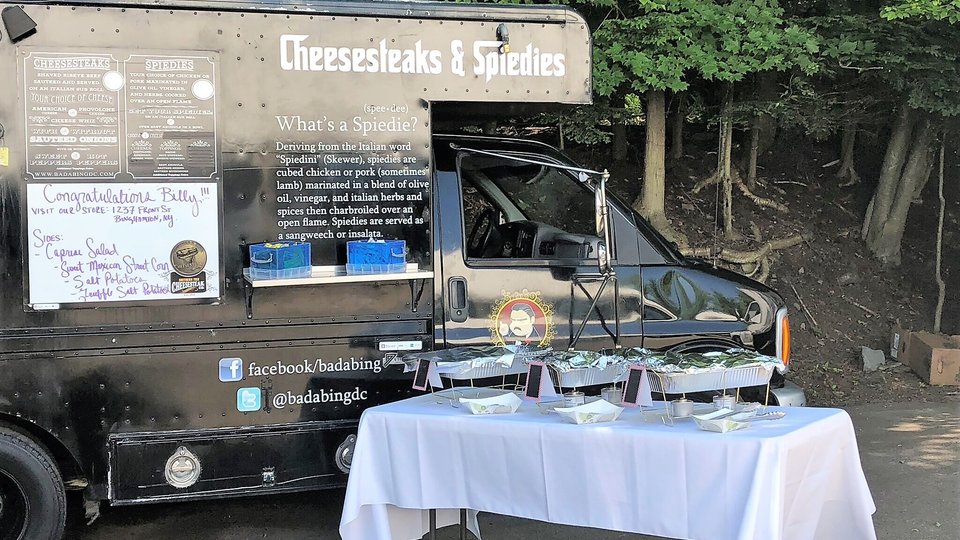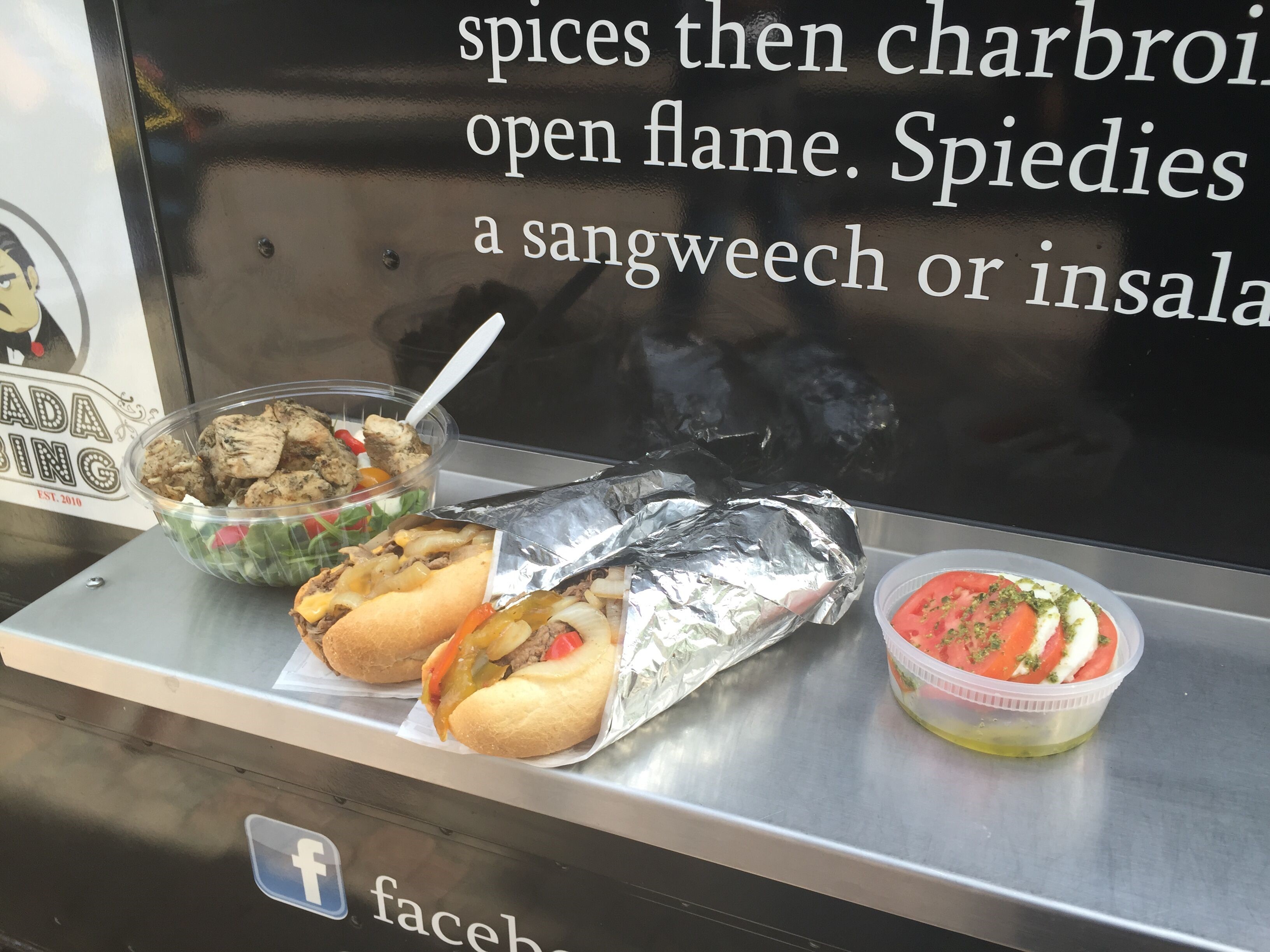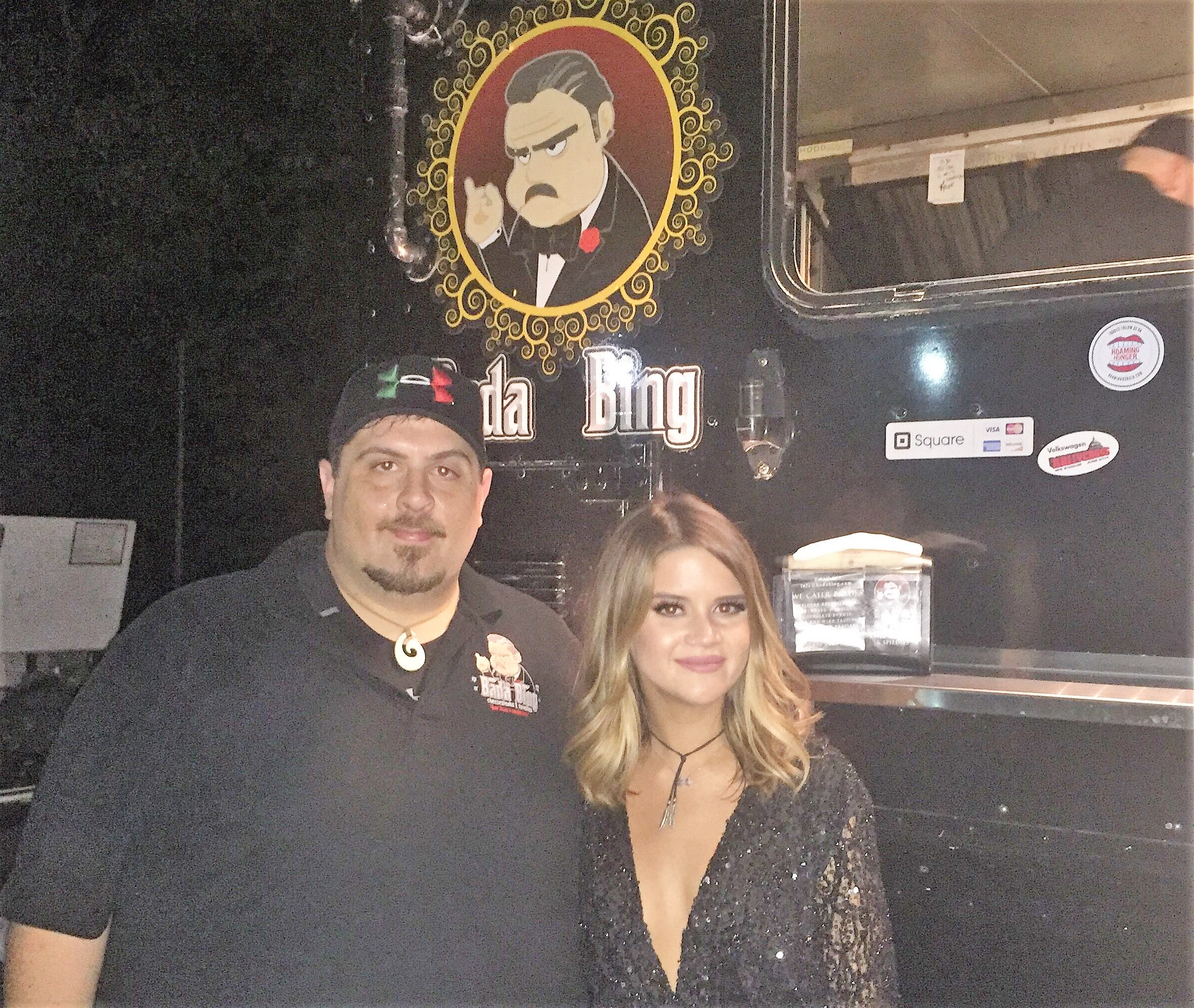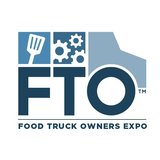Article
Chef/entrepreneur spreads his love of Italian street food
Over the past nine years, Nick Terzella has experienced the excitement of establishing a successful business in a fast growing industry that continues to face challenges.

October 14, 2019 by Elliot Maras — Editor, Kiosk Marketplace & Vending Times
Nick Terzella got into the food truck business at the right time in the greater Washington, D.C. area. When he launched his Bada Bing food truck in 2010, mobile kitchens were just becoming popular. The market wasn't yet saturated, and regulations were fairly easy.
But Terzella's success wasn't all circumstantial. A professionally trained chef driven by a passion for Italian street food, he gained a loyal following serving high quality food as food trucks became increasingly popular. He also had the foresight to transition his business to new markets as the food truck market became saturated.
Over the past nine years, Terzella has experienced the excitement of establishing a successful business in a fast growing industry as well as the challenges of continuous change.
 |
| Cheesesteaks and "spiedies" are the main menu items from Bada Bing. |
Food trucks emerge
Terzella worked as a chef in fine dining establishments in different U.S. cities and served as a private chef to a New York City actress after he graduated from the New England Culinary School in Burlington, Vermont. In 2008, he noticed a gourmet food truck at President Obama's inauguration and became enamored by the concept.
While his original goal was to open a fine dining restaurant, Terzella realized many brick-and-mortar restaurants were struggling on account of the Great Recession. "A lot of restaurants were really struggling at that time," he said. "Things were just economically not looking good at that point for the restaurant industry."
So he decided to launch a food truck focusing on one of his favorite menu items — hot Italian sandwiches.
"I had no idea what to look for," he said, when it came time to find a truck. He paid $11,000 for a 1988 Grumman step van that had served tacos, and another $10,000 on repairs and kitchen equipment. He was 26 years old at the time, and the investment exhausted his savings.
Fortunately, getting permit approvals from the local and county governments was not difficult but there were annual food and fire safety inspections as well as sporadic health inspections.
He rented a kitchen to cut the meat, which he sourced from Costco and foodservice distributors, but all cooking was done on the truck.
A passion for Italian street food
Terzella served chicken and pork "spiedies," a favorite sandwich among Italian immigrants in the central New York State area where Terzella grew up, as well as Philadelphia cheese steaks.
The original Italian "spiedies," taken from the Italian word "spiedini," which means skewer, were lamb marinated with herbs, lemon, vinegar and olive oil, that were cooked on a stick over an open flame and then served on sliced Italian bread. "They (the immigrants) would take that sliced Italian bread and squeeze it around the meat on the skewer and pull it off," he said. "It made a little hand held sandwich."
He offered several types of spiedies: mozzarella tomatoes and basil; buffalo style with blue cheese and arugula; bacon, lettuce and tomato with chipotle mayonnaise; barbecue sauce with picked onions and cheddar cheese. With the cheesesteaks, he offered a total of eight menu items in addition to sides and single-serve beverages.
"The customers really like to see things individually portioned," he said. Besides being convenient, single-serve packaging is sanitary. This, he said, is especially important for food trucks in order to distance themselves from the old "roach coaches."
In the beginning, Terzella often worked the truck alone, although he sometimes had as many as three employees depending on the event. He typically had one server in addition to himself serving as cook.
In search of customers
To find locations, Terzella spent two weeks driving around Arlington, Virginia, to assess foot traffic. He looked for places with a lot of foot traffic and a seating area, such as a park. "That's how I determined where I was going to go," he said. "If you're doing lunch, you want to be in an area where there's lots of businesses and large businesses."
He made it a point not to serve in places where he would be competing with other businesses. "I wouldn't want to pull up besides a Jersey Mike's Sub or someplace like that, just out of respect and trying to keep things civil between restaurants and food trucks," he said.
Favorable customer response
His truck did well from the first day, serving lunch to around 70 in an area of Arlington called Ballston that was near a mall.
"Everybody was very excited at that point," he said. "The food truck thing was very new. Everybody was happy that they had new options."
After the first month, he began accepting credit cards using the Square card payment platform.
"It was right when Twitter was first becoming big," he said. "It was a great help to us. We would just tweet our locations. We built up a clientele that way." He served six regular stops in the Arlington area.
Early challenges
While customer response was positive, being a startup had its challenges. "We had quite a bit of trouble staying on the road because of the quality of the truck that I had first chosen," he said.
"There were surprises every day," he said. "The challenges start right when you pull up to the curb. It's not always easy to park a 20-foot kitchen. Then you have restaurants coming out and yelling at you."
There were times when his truck broke down on the way to a location, causing him to lose the sales and the perishable food in the truck. "That's the major difference between a restaurant and a food truck," he said. "There are so many different variables with a food truck, from weather to restaurant owners, police, the different laws in the localities and all the different things you have to deal with."
After one year, he scrapped his first truck and purchased a Verizon service truck which had a power generator. "I made sure it was more mechanically sound," he said. "I understood the business more." He refurbished the inside of the truck, including stainless steel walls. He also purchased some new kitchen equipment which he installed himself with the help of his brother, Chris. The second truck was a $40,000 investment.
Positive publicity
 |
Nick Terzella welcomes country music star Kelsea Ballerini. |
One of the biggest breaks was a feature article published in The Washington Post in 2011. The publicity brought an immediate increase in business.
After serving tailgate parties at Washington's RFK Stadium in 2012, Travel & Leisure Magazine featured the truck as one of the nation's best stadium food providers. There was also an article on Buzzfeed. Terzella also did some TV cooking demonstrations.
The biggest break was winning the support of country singer Luke Bryan in 2015 who was researching food trucks. Bryan contacted Terzella to cook for his band and crew at concerts.
"It kind of got popular within the country circuit," he said. "I ended up cooking for quite a few country artists. Our popularity just continued to grow."
His busiest event was a Bruce Springsteen concert attended by about 50,000 people at Washington's National Park. The biggest private event was a party for Capital One for 1,300 people.
As food trucks became more popular, the business did become more competitive. Part two of this two-part series will explore how Terzella addressed this challenge and added a brick-and-mortar restaurant.
Photos courtesy of Bada Bing food truck.
About Elliot Maras
Elliot Maras is the editor of Kiosk Marketplace and Vending Times. He brings three decades covering unattended retail and commercial foodservice.


